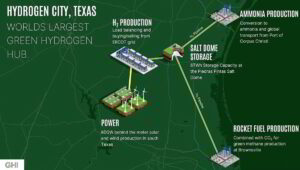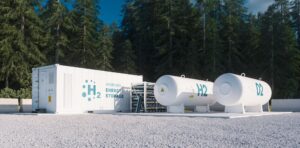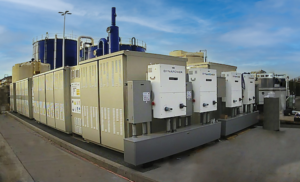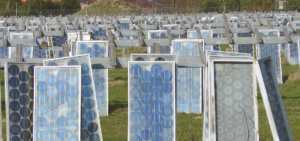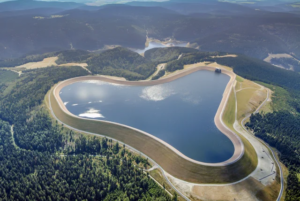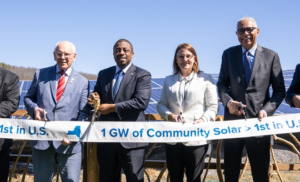In This Issue
- Flanigan’s Eco-Logic: Civic Duty
- 24/7 CFE Carbon-Free Accounting
- Mega Hydrogen Projects
- Hydrogen Combustion NOx
- SunCable to Singapore
- Flow Batteries from Australia
- End of Life Solar Modules
- New Life for Turkish Coal Mines
- Pumped Hydro Storage
- The Empire State Leads in Community Solar
- The NetPositive Podcast Updates
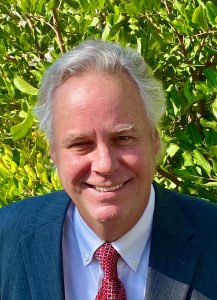
Flanigan’s Eco-Logic: Civic Duty
Nearly two years ago I was honored to be asked by Glendale City Council Member Dan Brotman to serve as a Commissioner for Glendale Water and Power, our hometown municipal utility. Glendale has some 210,000 residents and its own utility which peaks out at about 350 MW of power. We deliver about 25,000 acre feet of water each year, nearly 8 billion gallons. This results in combined gross revenues of ~$300 million.
Within a few months, I was elected by my fellow commissioners to be president. To the best of my abilities, my job has been to guide the Glendale Water and Power Commission and to work to clearly articulate our advice to the city council members for whom we serve.
Two hugely controversial issues have been on our docket: First, whether or not to recommend approval of a landfill methane power plant. While not large, 12 MW max, it would burn methane/biogas from the Scholl Canyon Landfill. Like it or not, we have methane there for decades to come – poor quality and degrading all the time. The landfill was one of the first in the nation to install a methane collection system. The gas was piped and burned at the Grayson Power Plant, seven miles away. But the caustic gas damaged the turbines and raised local air pollution problems that ended its use there. Since then, the methane has been flared at the landfill.
The decision came down to this… either continue to flare it or burn it in highly efficient engines providing 12 MW of renewable power and tens of millions of dollars of value to the City. Not trusting the safety of the generation, the local neighborhoods wanted to continue to flare it. They still do.
After visiting the site, considering the pros and cons, speaking directly to homeowners there, weighing considerable environmental analysis, I recommended getting some useful value from this nasty fuel. What’s best for our community? Given the fact that the gas is there, given the efficiency of the units and the dispersion rates from this hilltop landfill, the benefit outweighs the impact. So yes, build modular generating units with the best available control technologies. Trade-offs, upset citizens. Tough cases… that’s civic duty. You’ve got to make a decision.

The second major issue that we faced this year was even more contentious: Whether or not to build 93 MW of natural gas fired capacity at the Grayson Power Plant. Let’s back up. Grayson is a sprawling facility of 9 generating units located along the Los Angeles River in Glendale. One of the boilers was built in the 1940s, another in the 1950s. It’s a museum. Right now you may be able fire up as much as 160 MW there. Several years ago, GWP wanted to increase the plant size to 262 MW using combined-cycle gas turbines. That plan gave rise to the Glendale Environmental Coalition (GEC) headed up by Dan Brotman. GEC members could not see why the utility would invest in gas-fired capacity – a 30 – 40 year asset… when our society – and our utilities – are making large and needed strides to decarbonize. GEC’s message was loud and clear.
GEC got the public and Council’s attention, and Council put the 262 MW re-powering project on hold and instructed its utility to release an open solicitation called the Clean Energy RFP. Over 40 proposals presented solutions for the City… things like virtual power plants, solar everywhere, energy efficiency, demand response. Several programs took root, others are still in development, and at the end of the day, the utility came up with a revised re-powering scheme for Grayson. Gone is 262 MW of baseload capacity. The revised plan calls for 93 MW from five, 18 MW Wartsila engines that will run no more than 15% of the time, and 75 MW of Tesla batteries. Wartsila, a Finnish company, is developing means to use higher and higher concentrations of hydrogen fuels in these engines.

Ted Flanigan, Sarojini Lall, Mayor Paula Devine, and Joel Peterson at Glendale’s State of the City Luncheon
My commissioners and I have studied the facts, deliberated, we’ve been lobbied, and in the end, we were united in consensus. Let’s get off gas as soon as possible. Let’s encourage policy to convert the gas engines to green hydrogen as soon as possible. Let’s maximize energy efficiency and demand response in the City. Let’s fully support distributed energy resources. And, let’s build this scaled-down power plant so that our utility has sufficient capacity in the summer months in the coming years. Rather than being short and putting the community at risk of rolling black-outs, let’s put the capacity in place to safeguard our seniors, our hospitals, our vital infrastructure, and our community. While not perfect as it does involve gas use, the Commission and I saw the good in the revised plan. Accept it with the caveats above. That was our recommendation to Council.
Shortly thereafter, Council took up the Grayson re-powering issue. Dan Brotman had gone from GEC founder to City Council member. He wants to leave no rock unturned and to continue to dig into alternatives to the plant. GWP buys most of our power from far away and access is constrained, complex, and historically rooted. Can GWP negotiate for greater transmission access from LADWP? Can GWP buy more capacity from LADWP? Can GWP ramp up energy efficiency and demand response programs? How much distributed solar and storage can be readily built in the City. Dan Brotman presented a motion to postpone the decision to fully explore these carbon-free options.
The motion to dig deeper for alternatives passed. All five units that make up the 93 MW plant are now on hold as solutions are considered. Time is of the essence as air quality regulations are forcing the closure of some of Grayson’s units. Hopefully the benefit of the delay, finding means to be deep green and true to a carbon-free future, will be greater than its cost. It was a risk that I was not willing to take and impose on those vulnerable in our community.
Coming down on the side of combusting fuels is uncomfortable for me. EcoMotion specializes in solar and storage solutions. My career has been dedicated to greening through efficiency. But civic duty caused me to think broadly, not just about my positions, but the livelihoods of the many residents of our community. I’m in a position of influence, and my charge is to use that for the greater good. Not my dogma, but the greater good. I studied these issues, considered and reconsidered, and at the end of the day, had to make a judgment. Actually two. One in favor of using nuisance gas for community benefit, and the other for the strategic deployment of 93 MW of gas-fired capacity. What a year. What a year of tough decisions. Baptism by fire in the name of civic duty.


